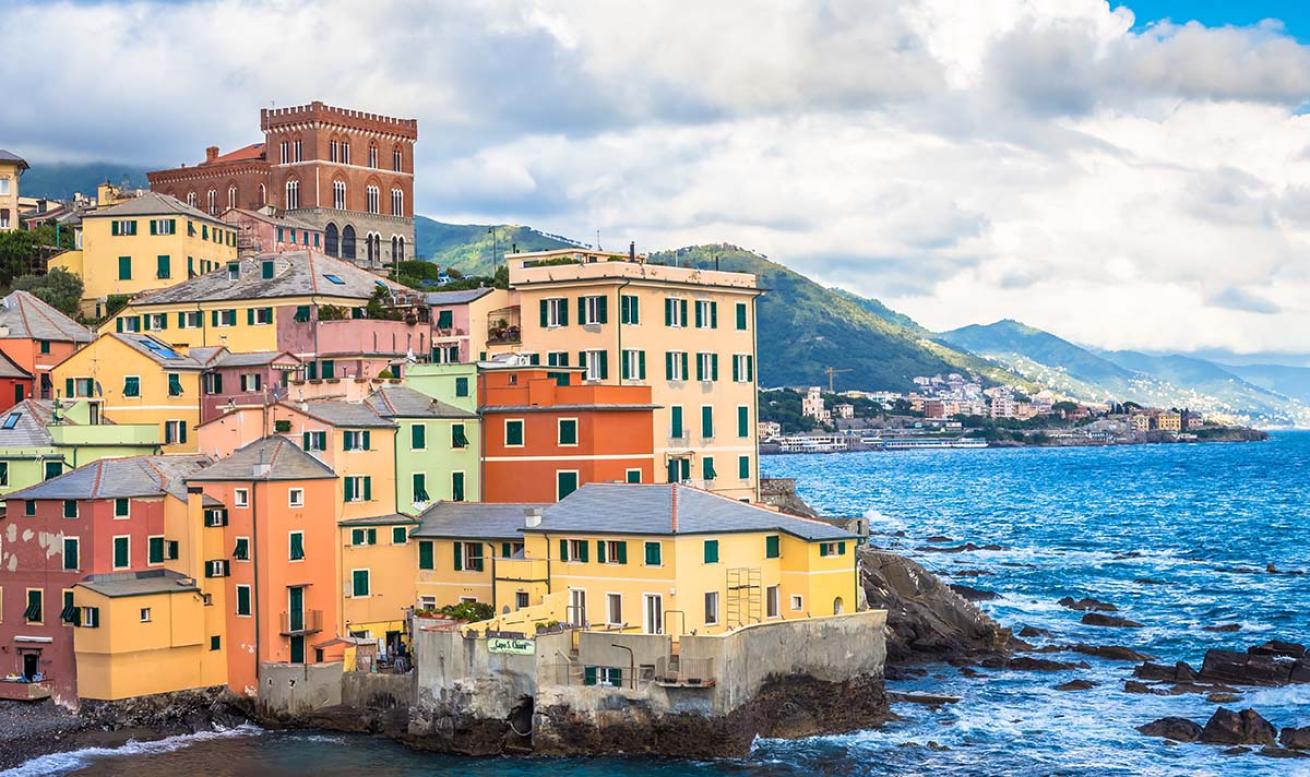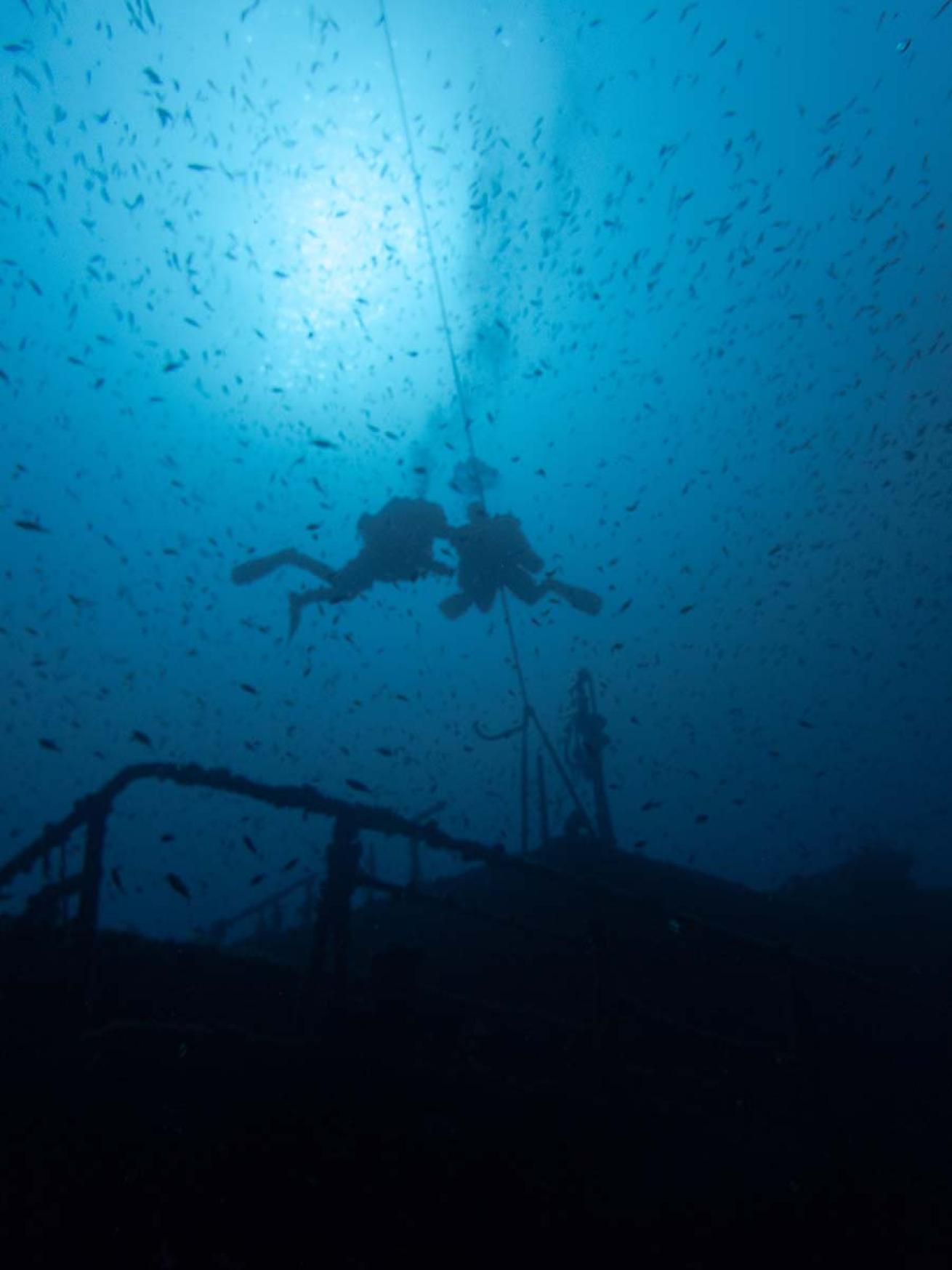An Oil Tanker Wreck Now a Scuba Diving Paradise in Italy
The sea off the Genoa coast resembled the set of a catastrophic film: an oil tanker in flames, violent explosions, a billowing column of black smoke, thousands of tons of crude oil pouring into the sea, five dead.
It all started with a single explosion. At 12:30 on April 11, 1991, the MT Haven oil tanker floated seven miles off the coast of Genoa as the crew transferred crude from one tank to another—an unusual operation which suggests that the ship had some troubles before even arriving in Italy. That first explosion killed the captain and four crew members. The next two broke the ship into three pieces that immediately scattered along the seabed. One came to rest nearly 300 feet dee and the section with the bow sunk below 1,400 feet while the third and largest found its home between 240 and 99 feet.
Thirty years on from the disaster, Haven is the largest diveable wreck in the Mediterranean Sea — and Italian divers are rallying to turn it into a marine protected area.
From Disaster to Destination
The immediate environmental impact of the Haven explosion was enormous: about 450,000 barrels of crude oil burned and over 142,000 ended up in the sea, polluting 25 miles of Italian coastline and three miles of the French coast around Saint Tropez.
In the end, no one was convicted in relation to the disaster.

Shutterstock.com/Paolo GalloThe Genoa coast is home to the largest wreck in the Mediterranean, MT Haven.
“Nobody gave a damn about those victims, especially the three Filipino sailors,” says Erika Della Casa, a journalist who followed the Haven case for the local newspaper, Il Secolo XIX.
The Greek-Cypriot shipowner Stelios Haji-Ioannou was acquitted of manslaughter in 1997; a Genoa court said in its sentence that it had not been able to find the cause of the accident.
“Everyone was acquitted and the families of the victims were not even compensated,” says Della Casa. “But the Haven was known to be in a bad state even before that accident. At first some crew members said that the valves used for the transfer were unsafe, but the judge considered them unreliable.”
The reclamation of the coasts and the seabed took Italy years, but the effort turned Haven into one of the most popular destinations for Italian and European divers.
Andrea Bada, 44, a professional diver who has discovered several wrecks — a Roman ship full of amphorae and a German plane, to name a few — witnessed firsthand the seabed’s reclamation. “A short time ago I made measurements to analyze the crude oil that had solidified at the bottom of the holds,” he says. “It had hardened so much that I had to cut it with a knife."
"Oil is harmful when it moves and can be ingested by fish,” says Maddalena Fava, an ecologist who has conducted several scientific observations around Haven. “What remained on the seabed has settled on the rocks and it’s not dangerous anymore. In a certain sense it is as if it has returned from where it was extracted.”
As the oil has receded, biodiverse life has returned to the site. Groupers, sea bream and snapper all breed here. Huge shoals of anchovies aggregate, attracting schools of huge tuna that can each weigh more than 350 pounds.
“It is one of the few places in the world where hunting tuna can be observed,” says Bada.

Shutterstock.com/Jos de SchiffarDivers descend onto Haven.
Smaller animals no less important to the region’s marine health have made it their home as well.
"Around the wreck we observed sea snails, many sponges and even two colonies of black coral,” Fava says. “Some of the ship's irons became the new home of large colonies of spirographs, marine worms that filter the water, purifying it. The presence of black coral could prove to be a decisive factor for the creation of the marine protected area: the scientific community often suggests protecting the areas that host such colonies.”
Advanced divers have followed suit, returning again and again to the wreck. Deco divers can visit the deck, interior rooms and the engine room.
“Divers need at least a certification for dives up to [131 feet], which can be done without decompression,” says Bada. “To get up to the props, which are at a depth of [262 feet], you need higher level certifications. In any case, you must always dive with a qualified instructor, never alone."
Preserving Restoration
Baba and the Italian Federation of Sport Fishing and Underwater Activities are the first sponsors of an initiative to transform the wreck and nearby waters into a marine protected area.
“A very limited ban, just [1,150 feet] by [about 500 feet], would be enough for the fish to reproduce safely,” says Bada. “Fishermen know that around the Haven there is a lot to fish and they take away everything they can,” impeding the site’s biodiversity.
Such protections, says Fava, will help the site continue to thrive. “We mustn’t believe that such an underwater paradise is something irreversible. If fishermen continue to catch tuna, the food chain will go backwards. And the species will also decrease gradually lower in the pyramid. The Haven is a heritage that we must save.”
“We have already had some meetings and we have been promised that our proposal will be taken into consideration,” Bada says. The decision ultimately rests with the Ministry of Infrastructure.










